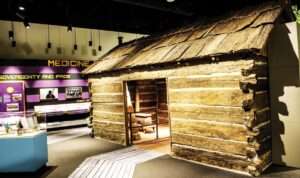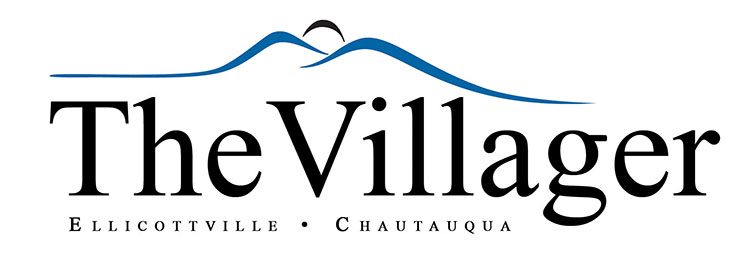By Jessica Miller
The people of the Iroquois Confederacy have always known themselves as Haudenosaunee, which means “People of the Longhouse”. The central community role of a longhouse is one of the common features the confederacy nations shared (Cayuga, Mohawk, Oneida, Onondaga, Seneca, and Tuscarora). One of the common ideas to help foster unity among the nations was to imagine each other as part of a great longhouse stretching through New York and Ontario, from the Seneca (the western door) to the Mohawk (the eastern door), with the Cayuga in the middle (the central fire).
These symbolic and practical structures could be homes, community centers, or ceremonial centers. Multiple families related through matrilineal clans lived together with the longhouse being expanded to accommodate new family members as necessary. Nonresidential longhouses would host meetings and celebrations. The nature of the materials used (bark and poles made from trees) and exposure to elements meant that regular maintenance was required to ensure habitable buildings for communities.
 One such contemporary longhouse has been built for use using timeless and contemporary materials. The longhouse at the Seneca-Iroquois National Museum/Onöhsagwë:de’ Cultural Center (82 W Hertel St, Salamanca) uses trees from the Allegany Forest and Allegany territory in addition to rubber crafted to look like bark. The trees serve as structural poles and fencing, and the replica bark serves as roofing and walls. Simulated bark was chosen to ease the museum’s upkeep efforts through the years while visually matching the original materials. Dr. Joseph Stahlman, executive director of the Seneca-Iroquois National Museum, has led volunteers in preparing the replica demonstrating what a historic Haudenosaunee home looked like.
One such contemporary longhouse has been built for use using timeless and contemporary materials. The longhouse at the Seneca-Iroquois National Museum/Onöhsagwë:de’ Cultural Center (82 W Hertel St, Salamanca) uses trees from the Allegany Forest and Allegany territory in addition to rubber crafted to look like bark. The trees serve as structural poles and fencing, and the replica bark serves as roofing and walls. Simulated bark was chosen to ease the museum’s upkeep efforts through the years while visually matching the original materials. Dr. Joseph Stahlman, executive director of the Seneca-Iroquois National Museum, has led volunteers in preparing the replica demonstrating what a historic Haudenosaunee home looked like.
“We want to introduce families to the longhouse concept,” said Stahlman. “This will be a good place for a showcase. It will show non-Native visitors how we lived.” A community garden near the longhouse will also involve the community in contemporary traditional farming; traditional staples will be cultivated with some involvement from seed collectors and the Cattaraugus County Agricultural Society.
Dr. Stahlman hopes the longhouse garden that gives an example of classic Haudenosaunee diet staples is also an example of the rewards of collaboration. “It doesn’t matter if families are Indigenous or not. We want to share with all of our community. It shows how necessary it is to work together.”
Years of working together to make the museum’s longhouse a reality will pay off when the longhouse opens to the public on May 27 at 1pm. The ribbon cutting ceremony is also joining the opening of a feature exhibit honoring Carson Waterman’s work. Carson Waterman: A Retrospective shows works he has done at different points in time. Specific periods ranging from past sketches from his Vietnam service and as an art school student to more current artwork will be available for viewing. Waterman’s reimagining of the Buffalo Sabres logo is another highlight of this display that art and hockey fans will particularly enjoy.
Further details regarding the museum activities can be found online at https://www.senecamuseum.org/. Readers interested in renting facilities for special occasions are encouraged to contact the museum at 716-945-1760 or emailing info@senecamuseum.org.
